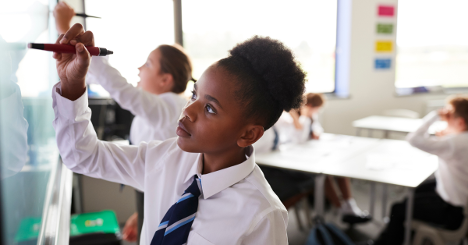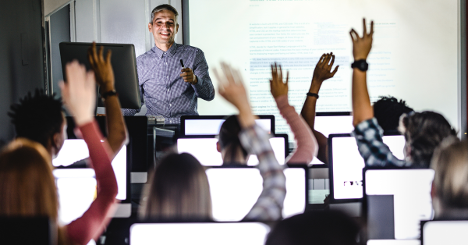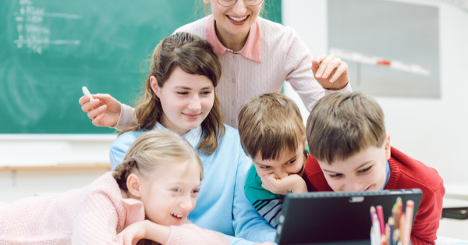Enhancing Student Engagement: Using Classroom Technology Less so Students
Interact More

Enhancing Student Engagement with Technology
Enhancing Student Engagement with Technology
Enhancing Student Engagement with Technology
Enhancing Student Engagement with Technology
Enhancing Student Engagement with Technology
Enhancing Student Engagement with Technology
Introduction
In the contemporary educational landscape, the integration of technology into classrooms has become ubiquitous. However, the mere presence of technology does not guarantee enhanced learning outcomes. A common concern among educators is that excessive use of classroom technology can lead to decreased student interaction and engagement. This article delves into strategies for leveraging classroom technology less to promote more meaningful student interactions, thereby fostering a richer learning environment.
The Importance of Student Interaction in Learning
Understanding the Role of Student Interaction
Student interaction is a cornerstone of effective learning environments. When students engage actively with course material and peers, they construct knowledge collaboratively, deepen their understanding, and develop critical thinking skills. Traditional teaching methods often prioritize passive learning, where students absorb information without active participation. In contrast, fostering interaction encourages students to question, discuss, and apply concepts, leading to deeper comprehension and retention.
Benefits of Student Interaction
- Enhanced Learning: Active engagement promotes deeper understanding and retention of course material.
- Critical Thinking: Interaction encourages students to analyze, evaluate, and apply knowledge creatively.
- Social Development: Collaborative activities foster teamwork, communication, and empathy.
- Motivation: Meaningful interactions increase student motivation and enthusiasm for learning.

The Role of Classroom Technology
Leveraging Technology for Student Engagement
While technology offers myriad opportunities to enhance learning, its indiscriminate use can detract from student interaction. Traditional lectures augmented with slideshows or videos may captivate attention momentarily but often limit opportunities for active participation. To harness the full potential of classroom technology, educators must adopt a strategic approach that prioritizes student engagement over passive consumption.
Reimagining Classroom Technology Usage
- Interactive Whiteboards: Instead of solely using whiteboards for one-way presentations, encourage students to interact by annotating, solving problems collaboratively, or sharing ideas digitally.
- Polling Software: Utilize polling software to gather real-time feedback from students, promote discussion around diverse viewpoints, and assess understanding.
- Online Forums: Create virtual discussion forums where students can engage in asynchronous conversations, share resources, and provide peer feedback.
- Gamification: Incorporate educational games and simulations to make learning interactive, challenging, and enjoyable.
Balancing Technology and Interaction
Striking a Balance for Optimal Engagement
Achieving the right balance between technology usage and student interaction is key to maximizing learning outcomes. While technology can facilitate engagement, excessive reliance on it may hinder meaningful interactions. Educators must carefully design learning activities that leverage technology to scaffold interaction without overshadowing face-to-face communication and collaboration.
Tips for Effective Implementation
- Set Clear Objectives: Align technology usage with learning objectives to ensure relevance and coherence.
- Promote Active Learning: Design activities that require student participation, such as group discussions, problem-solving tasks, or peer teaching.
- Provide Training: Equip students with the necessary digital literacy skills to navigate and utilize technology effectively for learning.
Encourage Reflection: Facilitate opportunities for students to reflect on their learning experiences and provide feedback on the effectiveness of technology integration.

Conclusion
In conclusion, the judicious use of classroom technology can enhance student interaction and foster a dynamic learning environment. By reimagining traditional teaching practices and leveraging technology strategically, educators can empower students to actively engage with course material, collaborate with peers, and develop essential skills for success in the 21st century. By embracing these strategies, educators can cultivate a culture of interaction, curiosity, and lifelong learning in their classrooms.
FAQs
Q: How can educators ensure technology enhances rather than detracts from student interaction?
A: Educators should prioritize active learning strategies, provide adequate training, and design technology-enhanced activities that promote meaningful interaction.
Q: What are some common pitfalls to avoid when integrating technology into the classroom?
A: Over-reliance on technology, lack of clear objectives, and failure to consider students’ digital literacy levels can hinder effective implementation.
Q: How can technology be used to promote collaborative learning?
A: Tools such as online forums, collaborative documents, and virtual whiteboards enable students to collaborate remotely, share ideas, and co-create knowledge.
[bdp_post_carousel show_tags=”false” show_comments=”false” show_category=”false” dots=”false” limit=”10″ orderby=”rand”]
You can signup for free
